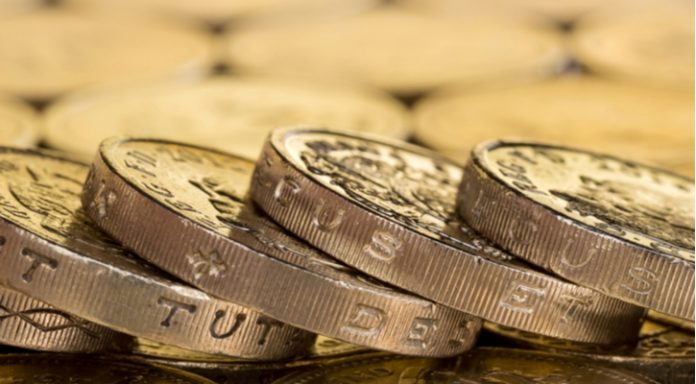The dollar fell from a 14-month high versus the pound last week, as hopes for a de-escalation in the US – Chinese trade war increased. The pound US dollar exchange rate picked up from a low of US$1.2662 to end the week at US$1.2752.
| What do these figures mean? |
|---|
|
When measuring the value of a pair of currencies, one set equals 1 unit and the other shows the current equivalent. As the market moves, the amount will vary from minute to minute. For example, it could be written: 1 GBP = 1.28934 USD Here, £1 is equivalent to approximately $1.29. This specifically measures the pound’s worth against the dollar. If the US dollar amount increases in this pairing, it’s positive for the pound. Or, if you were looking at it the other way around: 1 USD = 0.77786 GBP In this example, $1 is equivalent to approximately £0.78. This measures the US dollar’s worth versus the British pound. If the sterling number gets larger, it’s good news for the dollar. |
The pound moved higher versus the dollar in the previous week after unemployment in the UK hot a 43-year low and retail sales unexpectedly jumped boosting the odds of an interest rate rise by the Bank of England.
Yet despite the encouraging data, fears of a no deal Brexit have prevented the pound from pushing meaningfully higher versus the dollar. Another round of Brexit talks started last week, bringing market participants attention back towards the lack of progress being made between the UK government and Brussels. With the October deadline nearing, the possibility of the UK crashing out of the European Union without a Brexit deal is increasing by the day.
Business leaders and leading economists have frequently warned over the detrimental impact that a no deal Brexit could have on the UK economy and therefore the pound.
Today there is no high impacting UK data due to be released so investors will remain focused on any Brexit developments or lack thereof.
Dollar Falls on Weaker Confidence & Easing Trade Tensions
The dollar eased back towards the end of the week, as optimism increased of a de escalation of trade tensions between the US and China. China announced that a trade delegation would go to Washington towards the end of August to draw up a comprehensive trade accord before President Trump and Xi Jinping meet in November. As tension between the two powers eased, demand for the US dollar declined as investors no longer searched for its safe haven status.
Also weighing on the dollar was significantly weaker than forecast consumer confidence data. The University of Michigan confidence survey unexpectedly fell to 95.3 in August from 97.9 in July. The survey showed that the lower income brackets were increasingly concerned over rising prices.
| Why does poor economic data drag on a country’s currency? |
|---|
| Slowing economic indicators point to a slowing economy. Weak economies have weaker currencies because institutions look to reduce investments in countries where growth prospects are low and then transfer money to countries with higher growth prospects. These institutions sell out of their investment and the local currency, thus increasing supply of the currency and pushing down the money’s worth. So, when a country or region has poor economic news, the value of the currency tends to fall. |
The decline in the dollar could be short lived as investors look towards the minutes from the latest Federal Reserve monetary policy minutes.
This publication is provided for general information purposes only and is not intended to cover every aspect of the topics with which it deals. It is not intended to amount to advice on which you should rely. You must obtain professional or specialist advice before taking, or refraining from, any action on the basis of the content in this publication. The information in this publication does not constitute legal, tax or other professional advice from TransferWise Inc., Currency Live or its affiliates. Prior results do not guarantee a similar outcome. We make no representations, warranties or guarantees, whether express or implied, that the content in the publication is accurate, complete or up to date. Consult our risk warning page for more details.
This article was initially published on TransferWise.com from the same author. The content at Currency Live is the sole opinion of the authors and in no way reflects the views of TransferWise Inc.





